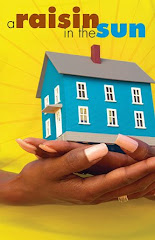The Black Arts Movement in New York in 1960s (site 1)
The Black Arts Movement was to show America the black writers and artists during the 1960s and 1970s. Seeing the different types of arts would usually be books, periodicals and documents of the course of history during the time period. The Black Arts movement was always paired with the Civil Rights Movement. The exhibit was founded and supported by the Peter Graham Fund for Radicalism in Literature and Art, the writings of Amiri Baraka were use a lot in the exhibit and he was called the founder of the Black Arts movement. The publications were a lot of black poetry and this 27-volume series was published in the 1960s and so the small press and the black arts movement was open to see on weekdays from 9a.m. to 5p.m. through May1st.
The Black Arts Movement in New York in 1960s (site 2)
The Black Arts Movement known as BAM started in the 1960s is was to change what people see of the African American identity. African playwrights, musicians, and visual artists who believed that using their arts will change the stereotypes about African American which led to a lot of American racism. The artists with the BAM would use writers Langston Hughes or cultural theorists like Alain Locke with the “Black Power Concept,” the BAM wanted to create artwork that will encourage white American to look at African American more positively and also wanted to improve black Americans’ perception of themselves. The BAM was supposed to uplift the spirits of African Americans to show their talent in art.
***
Langston Hughes (site 1)
Langston Hughes is an African-American poet, novelist, and playwright. He was born in Joplin, Missouri.This articles shows his life when he was younger and growing up and some of the things and people that influenced him and made him become what he is today. Some of his work is, The negro speaks of rivers (1921), The gold piece (1921), and The negro mother and the other dramatic recitations (1931). Hughes was considered one of the leading voices in the Harlem Renaissance of the 1920s.
Langston Hughes (site 2)
Langston Hughes achieved fame as a poet during the burgeoning of the arts known as the Harlem Renaissance. Although his youth was marked with transition, Hughes extracted meaning from the places and people whence he came. This article mostly is about Hughes works plays, poems and his works. Hughes's first volume of poetry was “The Weary Blues”, which he wrote in 1926. His family and culture influenced him alot too, it also led to his first autobiographical volume, The Big Sea (1940). Hughes encouraged black Americans to support the United States in its goals abroad, but he encouraged the government to provide for its own citizens at home the same freedoms being advocated abroad.
***
James Baldwin (site 1)
James Baldwin was an American writer. In essays, novels, plays, and public speeches, he spoke about the pain and struggle of black Americans. After was working on the railroad he moved to Greenwich Village, where he met Richard Wright. When Baldwin moved from Paris to New York he wrote notes of a native son (1955) and Giovanni’s Room (1956). His first novel was Go tell it on the Mountain (1953). The book the fire next time (1963) was the voice in the civil rights movement. After his friends Medgar Evers, Martin Luther King jr., and Malcolm X he returned to France and wrote If Beale street could talk (1974). The last novel he wrote was the evidence of things not seen (1985).
James Baldwin (site 2)
James Baldwin lived from (1924-1987). He is from Harlem, New York. He was adopted by the age of 12 his first story appeared in the newspaper. By 1943 he became writing full time. His first book about store front churches did not gain success. In 1983 Baldwin became Five College Professor in the Afro-American studies department of Umass Amherst. He died of stomach cancer on November 30, 1987.
***
Paul Robeson (site 1)
Paul Leroy Robeson was born on the 9th of April in Princeton, New Jersey. He was The youngest of five. His father was named William Drew Robeson, and his mother was named Maria Louisa Bustill Robeson. Paul loved to play sports and he went to college playing. Then after that college he went to another college to learn another profession.
Paul Robeson (site 2)
Paul Robeson played sports and his favorite was football. He was very talented because he was capable of doing all kids of things, from being a lawyer to playing sports. His favorite thing to do was to sing though.
Subscribe to:
Post Comments (Atom)











No comments:
Post a Comment